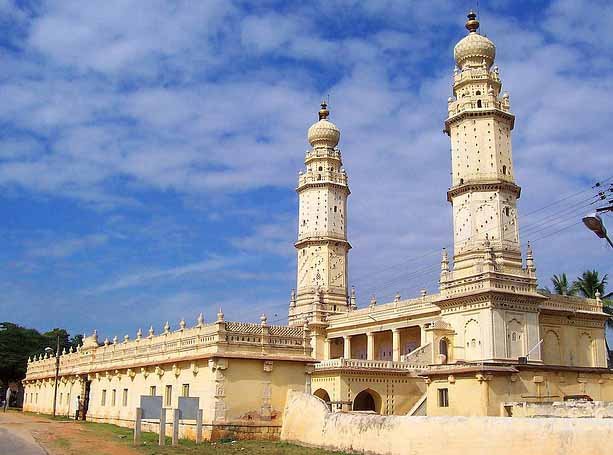1935 archaeological survey report from Mysore Suggests Anjaneya temple was demolished to make way for the Srirangapatna Jamia Masjid.


The Mysore Archaeological Department’s 1935 report has been brought to notice amid the temple-mosque conflict that has arisen in Srirangapatna town in Karnataka’s Mandya state. According to survey, Tipu Sultan demolished the Anjaneya Mandir and built Jamia Masjid after filling up the ground level of the temple construction, the archaeological department study says.
As per the report, Tipu Sultan, the king of Mysore and Srirangapatna at the time, razed several temples in the area to build mosques.
#BREAKING | Mysore Archeological Survey 1935 report accessed; demolition of Anjaneya Temple mentioned
Tune in – https://t.co/hBNv8QJ045 pic.twitter.com/X56fxQjs58
— Republic (@republic) June 4, 2022
According to an ASI letter issued in 2004 that cited the Mysore Archaeological Department’s 1935 study, the Madarsa operating on the existing Jamia Masjid grounds is illegal. The document obtained by Republic TV states that the Waqf board has been operating the Madarsa in the Masjid premises illegally since 1979.
Meanwhile, VHP and Bajrang Dal planned ‘Srirangapatna Chalo’ calling for a march to Jumma Masjid stating that the structure has been built upon a Lord Hanuman temple. Before the demonstration on June 4, prohibitory orders were issued under section 144 of the CrPC act in Srirangapatna, Karnataka’s Mandya district. A large police force was deployed in the town as a preventative security measure, and four checkpoints were set up in the region.
Karnataka | Section 144 CrPC imposed in Srirangapatna town of Mandya district from 6 am to 6 pm today in wake of ‘Srirangapatna Chalo’ call given by VHP for today.
Over 500 police personnel deployed, 4 check posts installed. Route march taken out in the presence of SP N Yatish. pic.twitter.com/vBMXQ3GXpO
— ANI (@ANI) June 4, 2022
Prior to this, Hindu organisations claimed that the Jamia Masjid in Mandya, Karnataka, was originally an Anjaneya temple. They had requested permission to worship the Anjaneya idol in the mosque, as well as an investigation by the ASI. They also requested permission to bathe in a pond located on the mosque grounds.
DISCLAIMER: The author is solely responsible for the views expressed in this article. The author carries the responsibility for citing and/or licensing of images utilized within the text.
